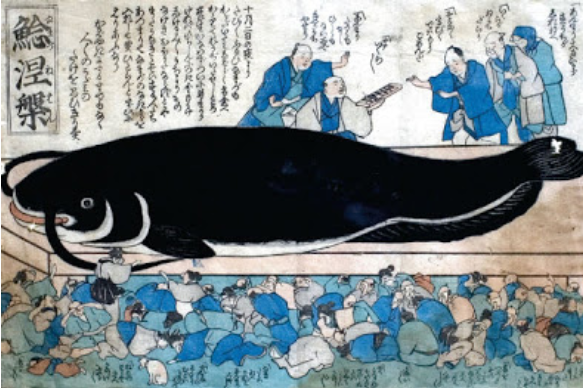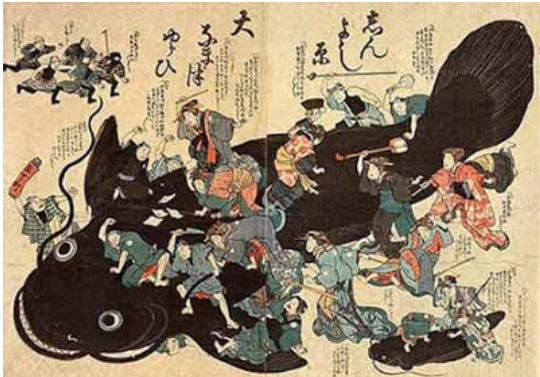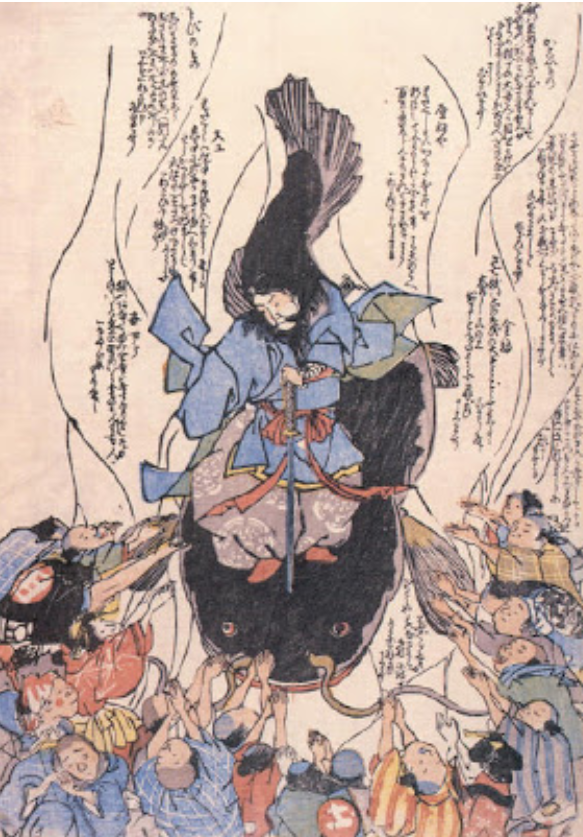- Namazu (鯰), or Ōnamazu (大鯰), is a giant catfish that has been a popular symbol in Japanese art and literature since the 1400s.
- According to a popular myth, Namazu lives deep in the earth and causes earthquakes and tsunamis by thrashing his tail. Japan experiences frequent earthquakes (10% of seismic activity on Earth occurs in Japan) and Namazu provided a way for people to explain these often devastating events.
- Depictions of Namazu are so common that woodcuts showing the catfish are called namazu-e.
 |
 |
 |
 |
Various depictions of Namazu (all from Bressan, 2011).
How is this related to climate?
- Over time, Namazu came to be associated with more than just earthquakes. From the early 1600s to the mid-1800s, he represented natural disasters in general, including weather- and climate-related heavy rainfall and flooding episodes.
- Namazu was also used in satire. In some works of art, he is depicted as a coward hiding from the aftermath of a natural disaster, criticizing the aristocracy and civil servants who often tried to escape the responsibility of helping the people after a catastrophic event.
References and additional resources
- Bressan, D. “Namazu: The Earthshaker.” History of Geology. 2011. http://historyofgeology.fieldofscience.com/2011/01/namazu-earthshaker.html.
- Bressan, D. “Namazu the Earthshaker.” Scientific American. 2012. https://blogs.scientificamerican.com/history-of-geology/namazu-the-earthshaker/.
- Cartwright, M. “Namazu.” World History Encyclopedia. 2017. https://www.worldhistory.org/Namazu/.
- “Namazu – The Earthshaker.” Geography of Japan Discoveries. 2017. https://blogs.ubc.ca/yonggeog481/2017/09/27/hello-world/.
